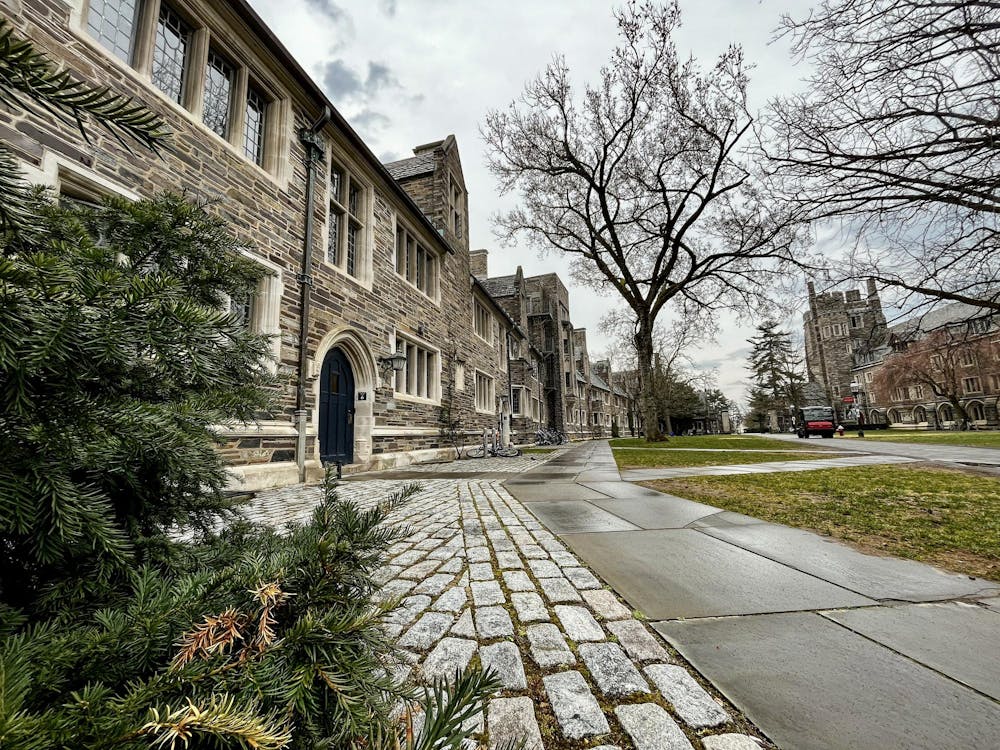Room draw came to a close on April 10 after upperclass draw ended. After the draw, only quads remained, leaving many groups unable to draw into a room. This year, only 20 room draw groups for the Class of 2026 stayed exactly the same. The Daily Princetonian examined how draw groups changed from last year to this current one.
The 2,274 upperclass students that entered the draw split into 865 draw groups. While draw groups can range in size from one to eight people, rising seniors tended to draw in smaller groups than rising juniors, with the average rising senior draw group having 2.3 people and the average rising junior draw group having 2.9 people.
More rising seniors drew in single-person draw groups than rising juniors, with 201 rising seniors drawing alone compared to 151 rising juniors drawing alone. This is likely due to the limited availability of singles for juniors, leading students to draw into larger groups as a precaution. This year, single rooms ran out about three hours into the rising junior draw.
Students are explicitly warned of the limited availability of singles in the upperclass draw. In Housing and Real Estate Service’s Room Draw Guide, they warn individual students that “Single room availability is not guaranteed at your room selection time. You may need to use the dropdown feature to add yourself to a group during room draw.”
Ninety-three members of the Class of 2026 drew with the same multi-person group they drew with in the previous room draw, forming 20 groups in the process. For the Class of 2025, 119 people drew with the same people that they did last year, making 42 individual groups, excluding those who drew individually.
Last year, the Class of 2026 could only draw with those within their residential college. This year, they can draw with students in any college.
Clay Reiferson ’25, who has been living with the same roommates since his sophomore year, said the main reason he thought his group stayed together was because they all enjoy “hanging out throughout the day” and “going for meals” together. Reiferson and his roommates are all on a Campus Dining meal plan.
Evan Alfandre ’25 cited similar reasons for continuing to live with his current roommates. He said they “like being able to hang out with each other.”
“We all run on relatively similar schedules,” Alfandre said. “We get up and lift in the morning … it’s easy to get meals together … we all go to bed at a relatively normal hour.”
Alfandre and his roommates are all members of Charter Club, but he said this did not directly factor into their decision to live together this year.
“I don’t think we remained together because of Charter,” he said. “We were becoming closer at the same time.”

Twenty-two percent of the 864 upperclass draw groups for the upcoming school year contained rostered varsity athletes for the 2023–2024 school year, totaling 189 draw groups with athletes. Half of these 189 draw groups were all-athlete draw groups, with 46 groups consisting of one person.
Most athletes were in a draw group with at least one non-athlete. On campus, there are 1,056 athletes on 37 varsity teams, many of whom do not live with another athlete. Of the 143 multi-person draw groups containing athletes, 33 percent contained only athletes.
Laoise O’Donohue ’26, who will be living with three of her teammates on the women’s open crew team in upperclass housing next year, said that it was important to her and her roommates to “be rooming with people on the same schedule as us, as NARPs [non-athletic regular person] and athletes can be on really opposite schedules.”
“We all have similar habits,” she said. “It made sense to room with athletes instead of NARPs.”
The remaining 51 percent of draw groups containing athletes were mixed athlete-non-athlete groups. Of mixed athlete-non-athlete groups, athletes were more likely to be the only athlete of their group than to have only one non-athlete member in their group.
Christina Li ’26, a member of the women’s open crew team, drew with “six other students who were not athletes.”
“I went into room draw intending to get a single, so I didn’t really think it mattered too much who my room draw group included,” Li said.
“I also have a lot of friends on the team who I considered entering room draw groups with, I just … betted on getting a single, and it worked out for me,” she said.
Additionally, athletes in mixed draw groups were much more likely to be the minority than in a majority-athlete group, as 23 percent of mixed draw groups were majority athletes and 52 percent were majority non-athlete. The remaining 25 percent of mixed groups had equal numbers of athletes and non athletes.
For those who were unable or didn’t draw into a room during their draw time, the waitlist is accepting applications. The order of the waitlist is determined by original room selection time and housing will be assigned around mid-July. Housing is guaranteed for all undergraduates.
Suthi Navaratnam-Tomayko is head Data editor and Sports contributor for the ‘Prince.’
Erin Yoo is a staff Data writer for the ‘Prince.’
Please send any corrections to corrections[at]dailyprincetonian.com.








